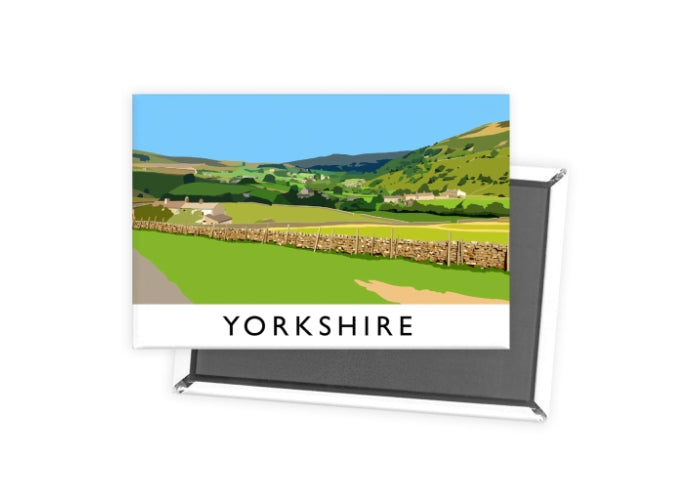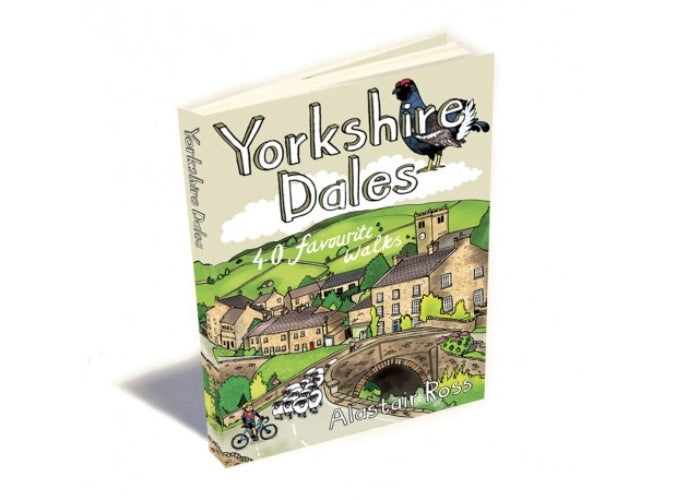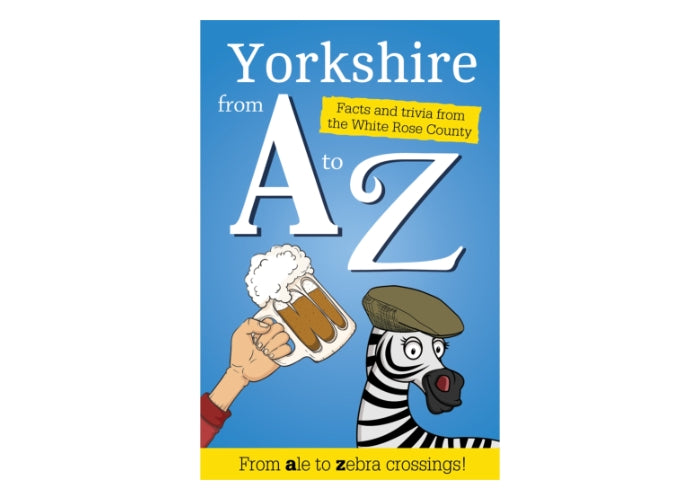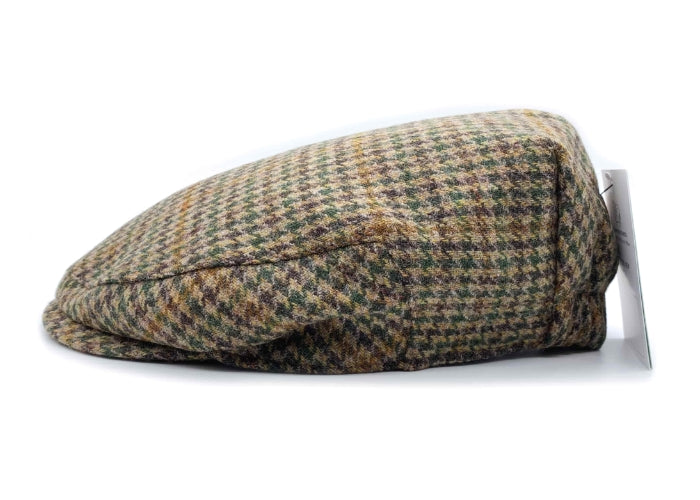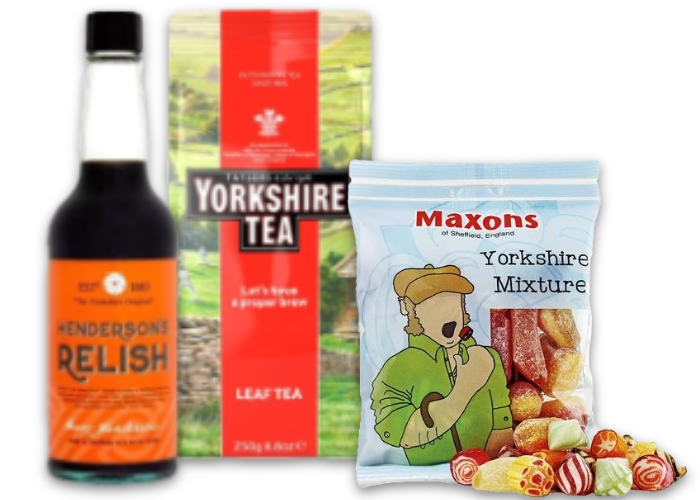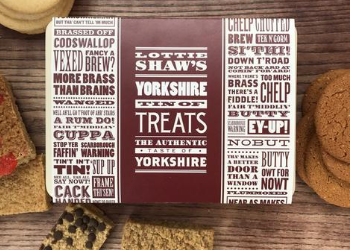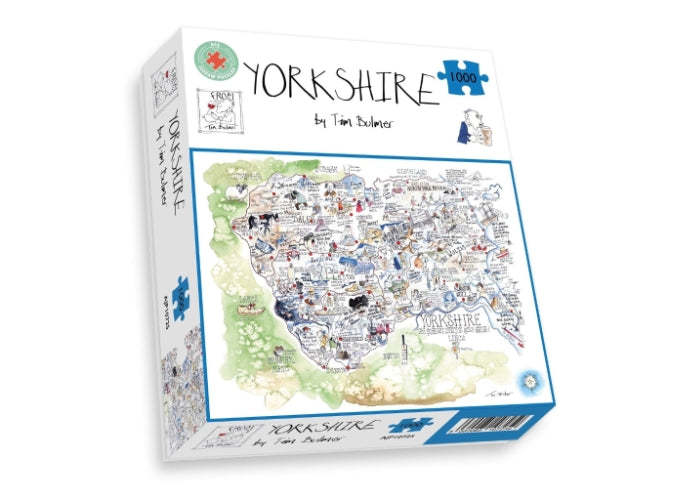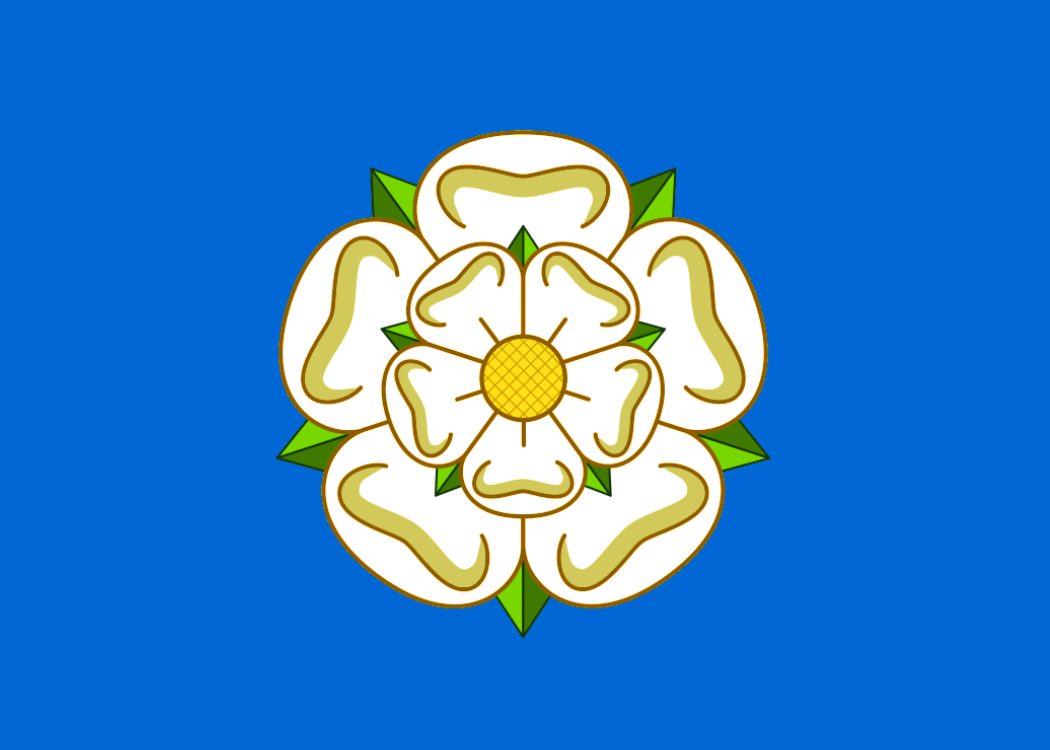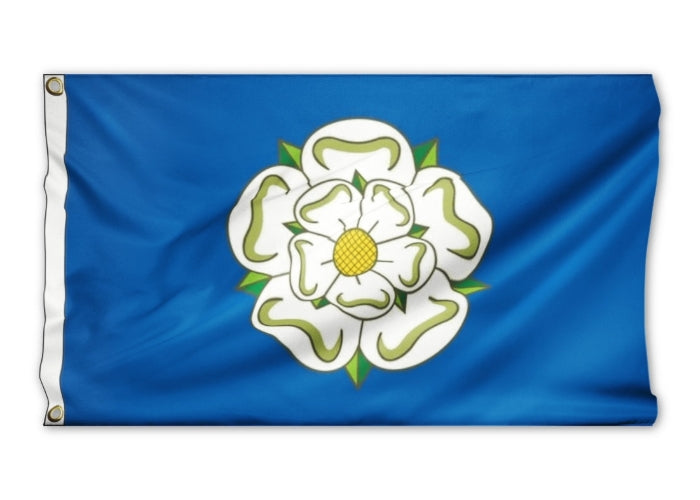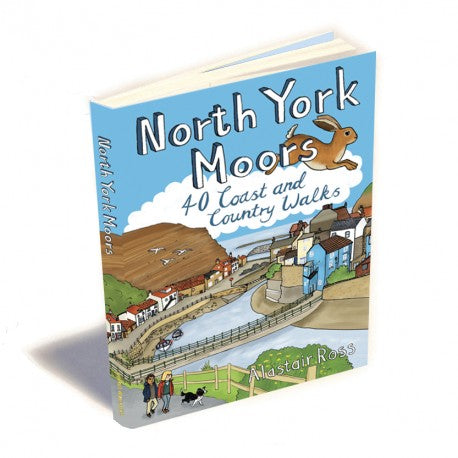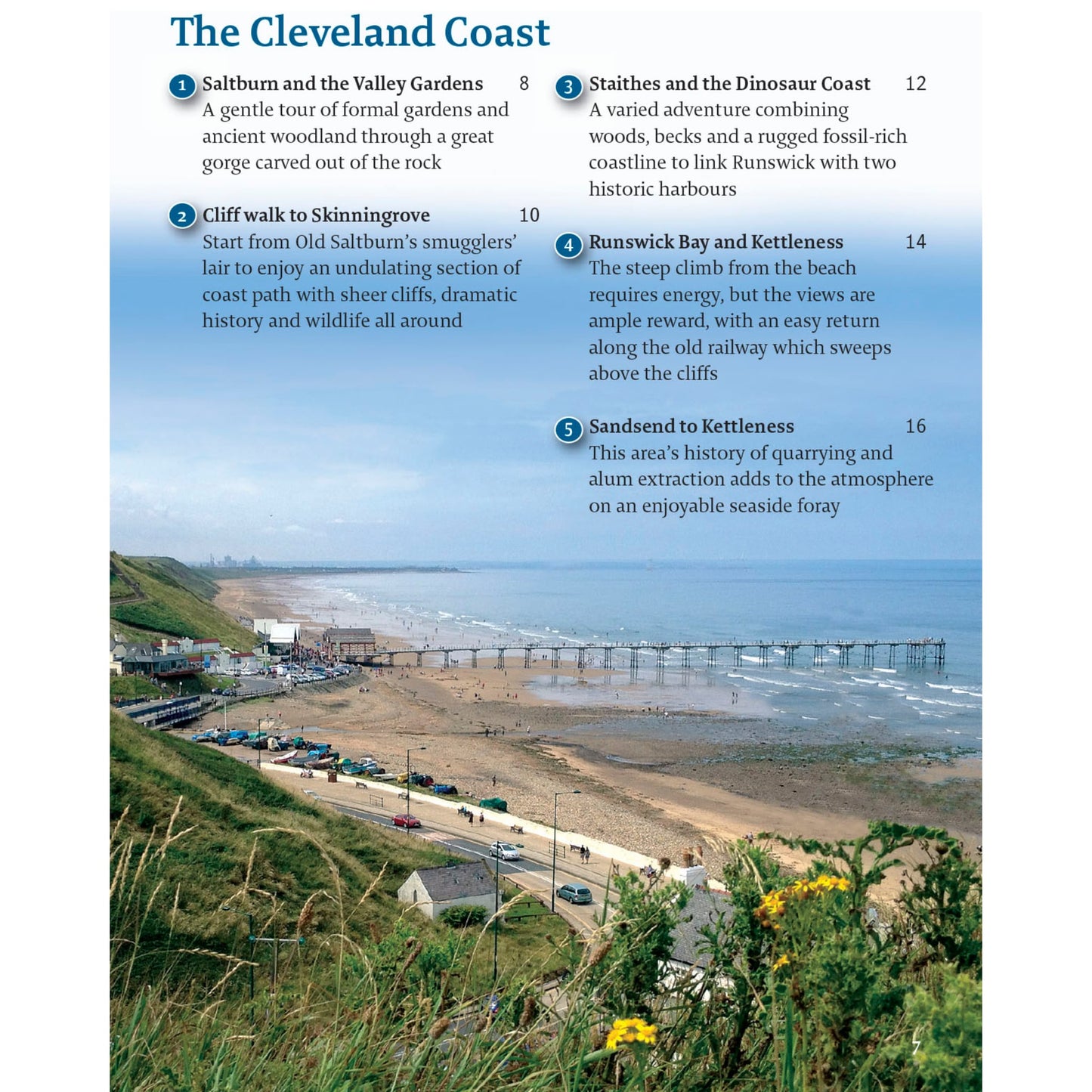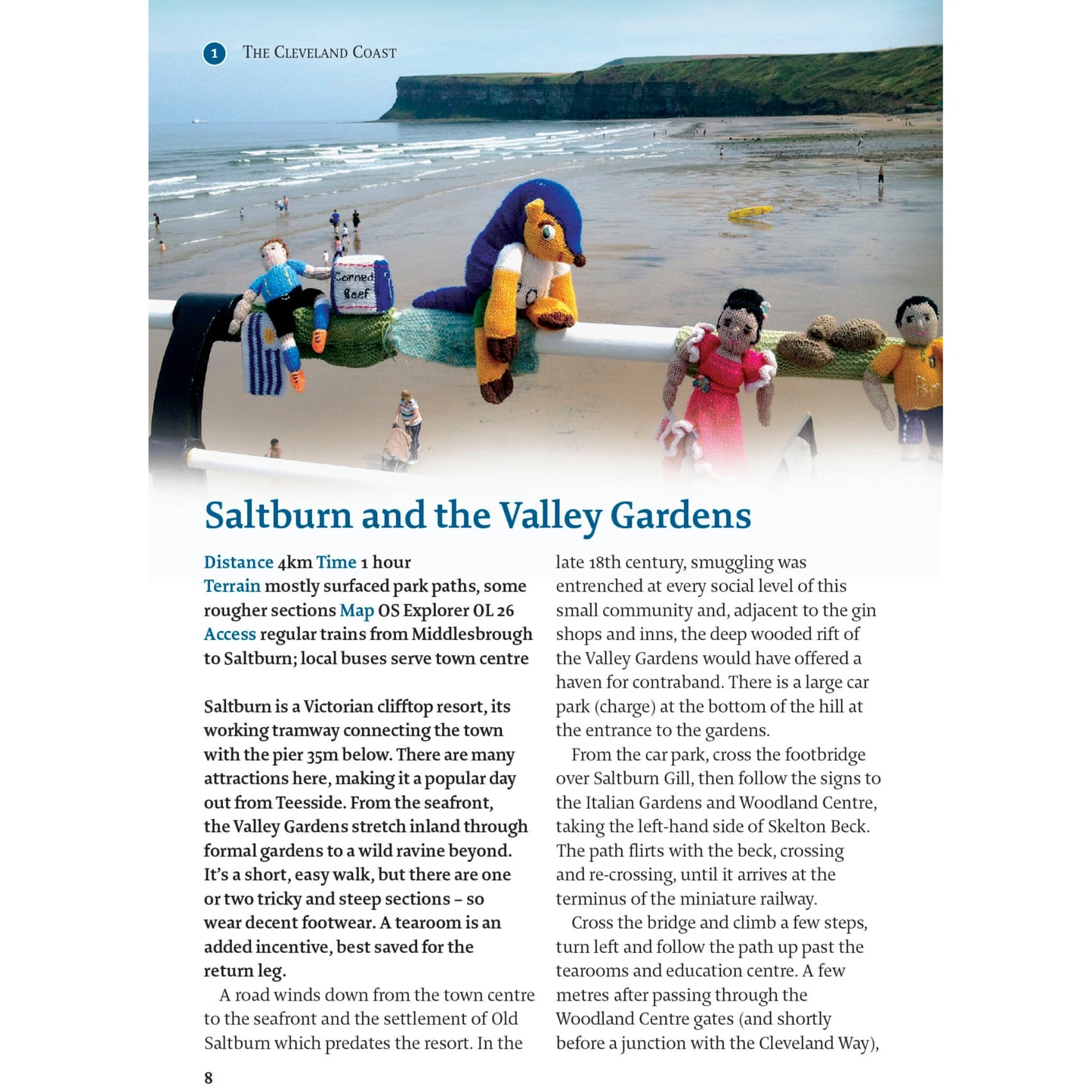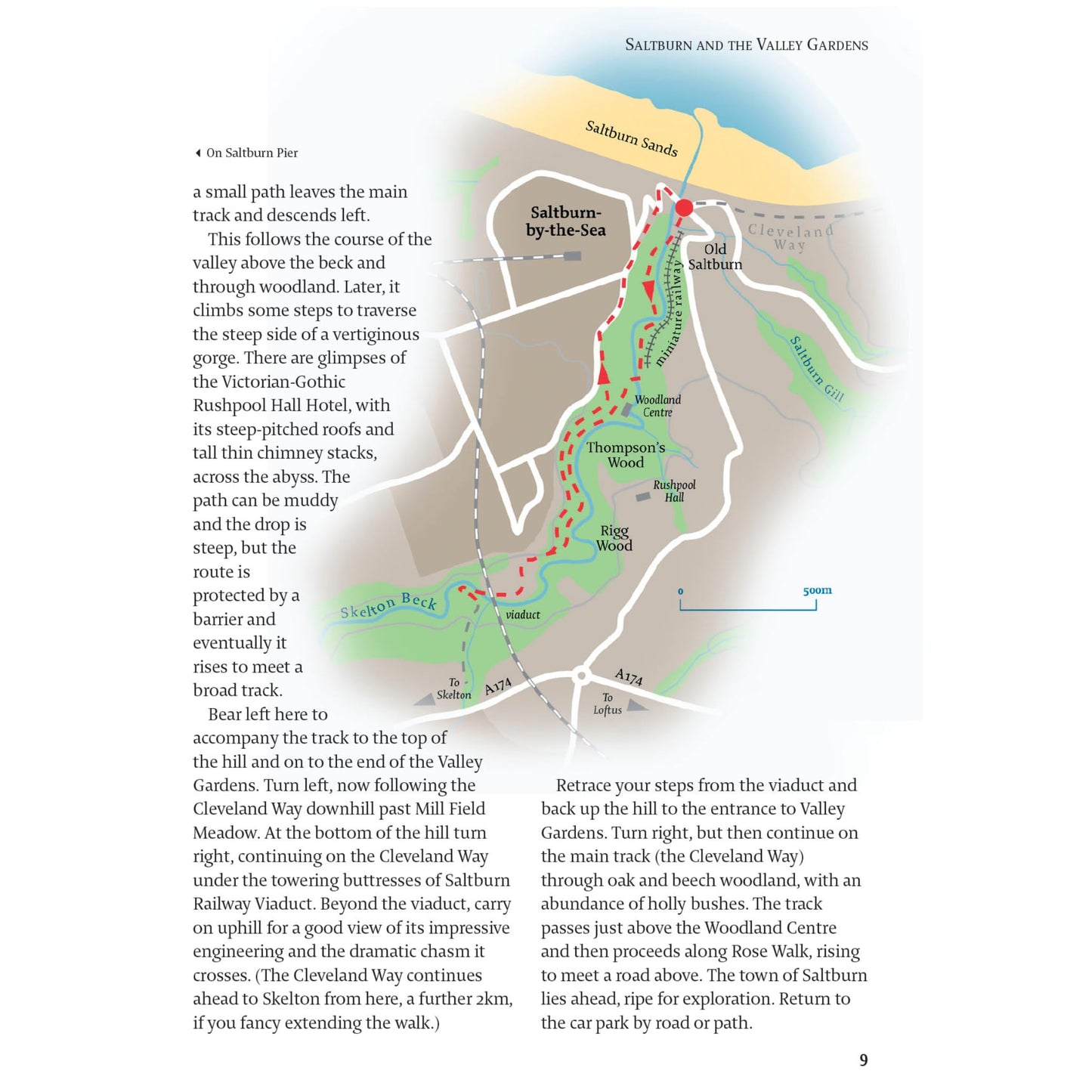Designated a National Park in 1952, the North York Moors include the largest area of heather upland in England, rising from the Vale of York and continuing to the North Sea coast where dramatic cliffs expose the geology that shaped this unique environment.
This guide features 40 coast and country walks that take in the very best the Moors have to offer – tranquil dales, stunning coastline, ancient woodlands, charming moorland village and spectacular ruined castles and monasteries – as well as one of the country’s best heritage railways.
Further north, the curious eroded cone of Roseberry Topping gives a distinct profile to the skyline of the Moors. In the south, a sequence of long valleys claw into the plateau, Ryedale, Bilsdale, Bransdale, Farndale and Rosedale all drawing water down from the wild uplands towards the Vale of Pickering. A series of attractive villages and market towns are strung along the base of the moors from Helmsley to Pickering. To the east, great forests spread across the hills, offering miles of walking and cycling on forest tracks, with opportunities to link these routes to the higher moorland. Steep-sided ‘griffs’ or ravines have been carved into the landscape, notably around the Hole of Horcum and Newton Dale. Across the middle of the National Park, the silvery Esk threads its way from west to east, countering the grain of the land which elsewhere has formed valleys from north to south. Most of the moorland settlements are spread along Eskdale, united not only by the river but also by the tracks of the Esk Valley Railway. The Park Centres at Danby and Sutton Bank form the start points for a number of walks and provide information, exhibitions and resources. There is also a visitor centre in Dalby Forest, accessed by toll road.
The Natural Moors
Away from the Park hotspots, you’re unlikely to hear much other than the croak of grouse or the haunting cry of the curlew, echoing over endless open horizons. Forty sq km of the Moors are classified as a Site of Special Scientific Interest (SSSI) because of the distinctive heathland habitat found here, while more than one-fifth of the National Park is wooded. Much of this is accounted for by the coniferous plantations in Dalby and Cropton, but there is also extensive native woodland where you will find oak, ash, mountain ash, alder and birch trees supporting a range of birdlife. The long Jurassic coastline offers expansive clifftop views, with hidden harbours and coves once the haunt of smugglers and now a magnet for geologists and fossil hunters. Because of the relative isolation of the area, there is little light pollution and this creates opportunities for clear stargazing. Dalby Observatory (in Dalby Forest) and Sutton Bank (on the western edge of the Park) have been given Dark Sky status.
Moors history
Although it is the natural environment that is the most enduring characteristic here, evidence of human history permeates every part of the Moors. Bronze Age burial mounds, dating back 3000 years, litter the open moor, while there are relics of Roman settlement, such as coastal signal stations, despite the remoteness of this outpost of Empire. Whitby has its place in religious history as the site, in 664AD, of the decisive synod that determined the future direction of the church in Britain in favour of the customs of Rome. Arguably, medieval Christianity has had the biggest human impact on the scenery of the Moors, too. The remains of monasteries and abbeys such as Rievaulx, Byland and Whitby have become icons, while the legacy of their granges, or monastic farms, has shaped the present-day agricultural landscape. Many moorland tracks originate in the transport of animals and goods to and from these centres of Christian community, with a proliferation of waymarker crosses still standing sentinel on the high, lonely routes. In the last few centuries, the stone and mineral wealth of the region has been systematically exploited. The large-scale extraction of ironstone in the North York Moors was central to the growth of the iron and steel industry in Teesside during the Industrial Revolution and contributed to the phenomenal expansion of Middlesbrough from a farming estate with just 25 residents in 1801 to ‘Ironopolis’ with a population of 90,000 less than a century later. There are fascinating remains of ironstone workings inland and alum production on the coast. Coal, jet and potash were also sources of wealth, some still extracted today. Flagged causeways were built to support this industrial activity, and these add to the network of footpaths and bridleways that explore the National Park. During the 20th century, extensive forestation took place in the southeastern area of the National Park, giving walkers and cyclists another very different environment to explore.
Walking the Moors
A number of long-distance trails cross the National Park, including the Cleveland Way, which travels 177km from Helmsley to Filey and takes in the entire coast from Sandsend; the famous 64km Lyke Wake Walk from Osmotherley to Ravenscar; the Tabular Hills Walk from Helmsley to Scarborough; and the Esk Valley Walk between Whitby and the source of the Esk. Aside from the official routes, there are miles and miles of trails, tracks and packhorse routes spanning the plateau. Some belong to monastic times, others – such as the track of the Rosedale Railway – to the Industrial Revolution. The 40 walks in this guide range from short and accessible strolls to full-day moorland and coastal expeditions. They are grouped into five areas: the Cleveland Coast, which comprises the northern half of the beautiful North Yorkshire & Cleveland Heritage Coast; the Cleveland Hills, including the country bordering Teesside; the Esk Valley, which runs through the heart of the Park, with all walks accessible from the Esk Valley Railway; Ryedale, Hambleton and the Southern Dales, focused on the valleys that meander south from the high moors; and North Riding Forest and the East Coast, weaving from the moorland plateau east of Cropton Forest, through the great forest of Dalby and down the Heritage Coast and beyond from Whitby to Scarborough. The moorland plateau does not reach any great altitude, with its elevation peaking at just 454m at Urra Moor. But this is wild and remote country, and should not be under-estimated. There are long stretches of exposed wilderness; weather is fickle and walkers need to be prepared for upland conditions, with mist common and snow not a rarity; some access roads are steep and can become impassable in ice; and clifftops require obvious care! As with any walk, it is important to take appropriate clothing, footwear and provisions. The sketch maps in this guide will give you a clear outline of the route, but are designed to be used in conjunction with the two OS Explorer maps, OL26 and OL27, which cover every walk in the guide.
Public transport
Many walks can be accessed by public transport, which also makes linear trips more feasible. The main routes are:
Trains
• Esk Valley Railway: Middlesbrough to Whitby, calling at loca stations in and around the Esk Valley
• Middlesbrough to Saltburn
• North Yorkshire Moors Railway: between Pickering, Grosmont and Whitby, with stations at Levisham, Newtondale and Goathland. As a heritage railway, out-of-season services are more limited
Buses
The following are key arteries with regular services, though varying in frequency:
X4 Middlesbrough-Saltburn-Loftus-Whitby
5 Middlesbrough-Guisborough-Loftus
X93 Middlesbrough-Guisborough-Whitby-Robin Hood’s Bay-Scarborough
80/89 Northallerton-Osmotherley-Stokesley
128 Helmsley-Pickering-Scarborough
840 Coastliner Leeds-York-Malton- Pickering-Whitby
A network of buses also operate across the National Park on Sundays and Bank Holiday Mondays during summer. As well as key locations, these reach places that have no other bus services, so its worth checking the website (moorsbus.org) to find the latest services and timetables.

